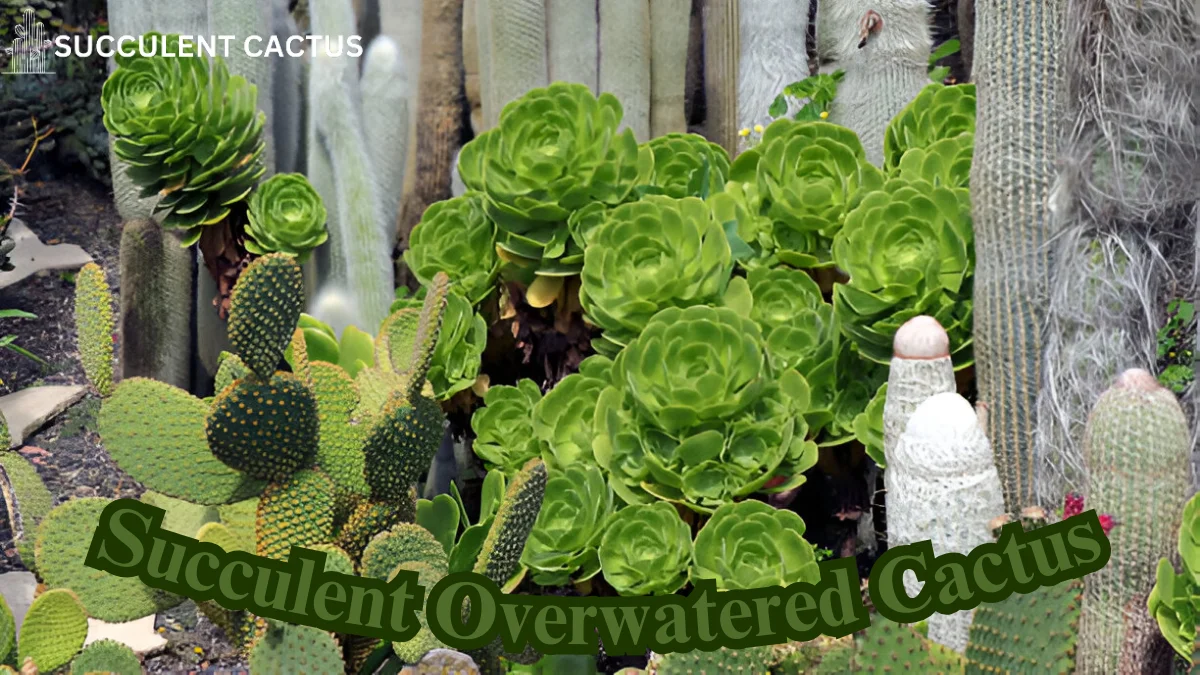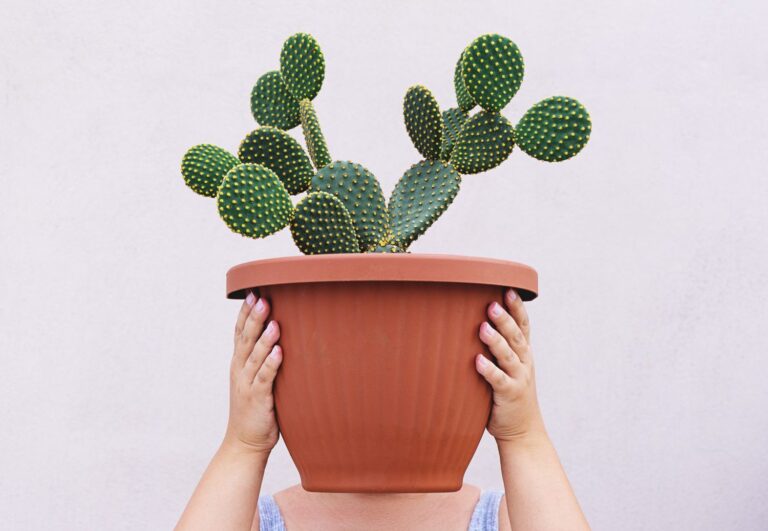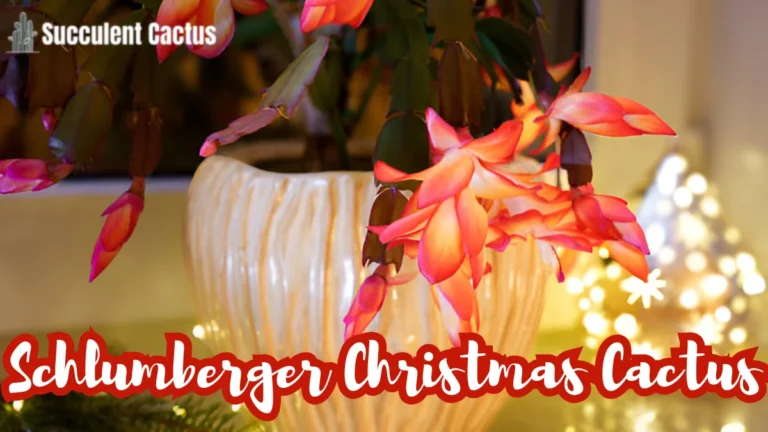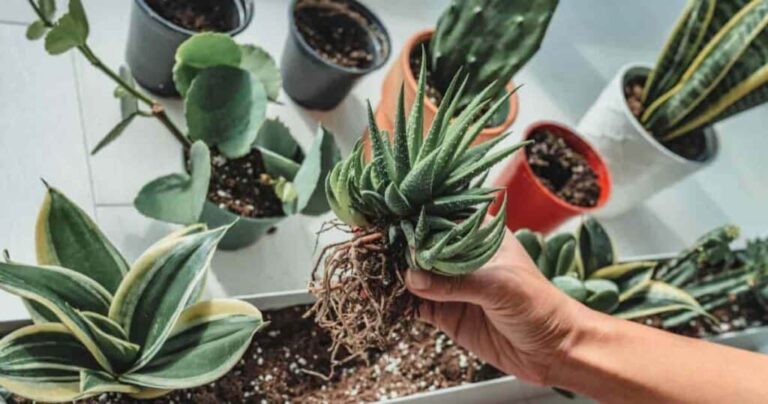Succulent Overwatered Cactus: Identifying and Fixing Overwatered Succulent Plants

Succulents and cacti are some of the most resilient plants, thriving in low-water conditions. However, overwatering is one of the most common mistakes plant owners make. Understanding the causes, symptoms, and solutions for an overwatered succulent cactus or succulent plant is crucial to keeping these plants healthy and vibrant. In this comprehensive guide, we’ll dive deep into everything you need to know about overwatering succulents and cacti, prevention tips, and effective care practices.
1. Understanding the Problem: What Happens When Succulents Are Overwatered
The Water Retention System of Succulents and Cacti
Succulents and cacti have evolved to store water in their leaves, stems, and roots, allowing them to survive in arid conditions. This unique adaptation makes them highly efficient in water use, but it also means succulent and cactus are prone to water-related stress if overwatered.
When overwatered, their storage tissues become saturated, leading to cell breakdown and plant damage.
Key facts about water retention in succulents:
- Succulent leaves and stems act as natural reservoirs.
- Excess water disrupts their ability to breathe through roots, causing rot.
- Root systems of succulents are shallow and cannot handle prolonged waterlogging.
Signs of an Overwatered Succulent or Cactus
Overwatered succulents and cacti exhibit distinct symptoms. Recognizing these early can save the plant.
Common signs include:
- Mushy leaves or stems: Excess water causes cell rupture, making the plant soft and squishy.
- Yellow or translucent leaves: This indicates that the plant is saturated with water.
- Blackened or rotting roots: Overwatered roots begin to decay due to oxygen deprivation.
- Leaf drop: When stressed, the plant sheds leaves to reduce water intake.
Why Overwatering Happens
Overwatering often stems from a lack of understanding about succulent care. Some of the most common reasons include:
- Watering too frequently.
- Using soil that retains too much water.
- Keeping the plant in pots without drainage holes.
Identifying an Overwatered Succulent Cactus
Visual Signs of Overwatering
To spot an overwatered succulent cactus, observe its overall appearance.
- Leaves may turn pale or yellow and feel mushy to the touch.
- You might notice a foul smell from the potting mix due to root rot.
- The plant might become discolored, with brown or black patches forming at the base.
Soil Conditions
The soil in which your succulent or cactus grows can provide clear indications of overwatering.
- If the soil is constantly wet or soggy, it’s a sign of excess water.
- Lack of proper drainage contributes to water retention.
Pro tip: Check soil moisture levels by inserting your finger into the top inch of soil.
Comparing Symptoms with Other Issues
It’s essential to differentiate overwatering symptoms from other plant problems like pests or nutrient deficiencies. For example:
| Problem | Symptoms | Cause |
| Overwatering | Mushy leaves, root rot | Excessive water retention |
| Underwatering | Wrinkled, shriveled leaves | Prolonged drought stress |
| Pest infestation | Visible bugs, leaf damage | Spider mites, mealybugs |
Steps to Save an Overwatered Succulent Cactus Plant
Stop Watering Immediately
If you suspect overwatering, pause watering to give the plant time to recover. Allow the soil to dry out completely before taking further action.
Remove Damaged Parts
Carefully inspect your plant for mushy, discolored, or rotting areas. Trim these parts using sterilized scissors or pruning shears.
- Remove affected leaves and stems.
- Ensure healthy tissue remains intact.
Repotting the Succulent or Cactus
Repotting is often necessary to save overwatered succulents.
Steps to repot successfully:
- Remove the plant from its current pot.
- Shake off excess wet soil from the roots.
- Trim any black or rotted roots.
- Place the plant in fresh, well-draining soil.
Recommended soil mix: Combine 60% cactus soil with 40% coarse sand or perlite.
Preventing Overwatering
Preventing overwatering is key to ensuring the health and longevity of succulents and cacti. By understanding the specific needs of your plants and following best practices, you can avoid common pitfalls.
Understand Your Plant’s Needs
Each succulent and cactus species has unique water requirements. While some thrive on minimal water, others might need slightly more frequent hydration.
- Research species-specific needs: Before watering, familiarize yourself with the specific succulent or cactus in your collection. For example, Echeveria prefers less water compared to Crassula Ovata (Jade Plant).
- Growth cycles: Many succulents enter a dormant phase during the colder months and need even less water during this time.
- Consider your environment: Humidity, temperature, and sunlight availability impact how quickly soil dries out.
Pro Tip: Label your plants with their names and basic care instructions for quick reference.
Use Proper Containers
Selecting the right container is one of the most effective ways to prevent overwatering. The container determines how quickly water drains and how air circulates around the roots.
Characteristics of the ideal pot for succulents:
- Drainage holes: Always opt for pots with drainage holes to let excess water escape.
- Material matters:
- Terracotta pots are porous and allow water to evaporate faster, reducing the risk of soggy soil.
- Plastic pots retain moisture longer, which may not suit water-sensitive succulents.
- Size considerations: A pot that’s too large may hold too much water in the soil, increasing the risk of overwatering.
Tip: Use a saucer under the pot to catch excess water, but make sure to empty it regularly to prevent standing water.
Watering Schedule
Establishing a proper watering schedule can prevent overwatering. The “soak and dry” method is particularly effective for succulents and cacti.
Steps for a perfect watering schedule:
- Water deeply but infrequently: Water the plant until water drips out from the drainage holes, ensuring all roots are hydrated.
- Allow the soil to dry completely: Touch the soil with your finger or use a moisture meter to check dryness.
- Adjust for seasons:
- During the growing season (spring and summer), water more frequently (every 2-3 weeks).
- In winter, reduce watering significantly (every 4-6 weeks).
Signs it’s time to water again: Leaves appear slightly wrinkled or deflated.
Soil and Drainage: Key Factors in Avoiding Overwatering
The soil and drainage setup play a pivotal role in preventing water retention and root rot.
Characteristics of Ideal Soil
Succulents thrive in soil that mimics their natural environment: sandy and gritty with excellent drainage. Ordinary garden soil holds too much moisture and is unsuitable.
Essential qualities of succulent soil:
- Well-draining: Allows water to pass through quickly.
- Low organic matter: Avoid peat moss, which retains water excessively.
- Aerated: Supports root oxygenation to prevent rot.
Enhancing Soil Drainage
If you can’t find a pre-mixed succulent soil, create your own using these components:
- Cactus soil mix (50%): Available in most garden stores.
- Coarse sand (30%): Increases drainage.
- Perlite or pumice (20%): Prevents soil compaction and enhances airflow.
Pro Tip: Add a layer of gravel at the bottom of the pot for even better drainage.
Choosing the Right Pot
The pot you select can make or break your succulent’s health. Different pot materials impact how quickly soil dries out.
| Pot Material | Benefits | Drawbacks |
| Terracotta | Absorbs water, promotes drying | Fragile and heavy |
| Plastic | Retains moisture, lightweight | Can lead to overwatering |
| Ceramic | Stylish, durable | Often lacks drainage holes |
Choose pots that balance function and aesthetics while prioritizing drainage.
The Role of Sunlight in Succulent Health
Sunlight plays an integral role in regulating water use in succulents and cacti. Without adequate sunlight, plants struggle to process stored water, making them more susceptible to overwatering.
How Sunlight Affects Water Use
Succulents use photosynthesis to convert light energy into food, utilizing water in the process. Adequate sunlight ensures this process occurs efficiently.
- Bright light reduces water retention: Direct sunlight helps the soil dry faster, preventing waterlogging.
- Lack of sunlight hinders water absorption: In low-light conditions, succulents reduce their metabolic activity, leading to potential water buildup.
Ideal Sunlight Conditions
Succulents prefer bright, indirect sunlight. While some varieties, like Aloe Vera, can tolerate full sun, others, like Haworthia, thrive in shaded areas.
General sunlight guidelines:
- Provide 6-8 hours of sunlight daily.
- Rotate the plant periodically to ensure even light exposure.
- For indoor succulents, place them near a south-facing window.
Warning: Too much direct sunlight can scorch succulent leaves, causing sunburn.
Signs of Sunlight Deficiency
If your succulent isn’t getting enough light, it will display signs of stress.
Symptoms include:
- Leggy growth: The plant stretches toward light sources.
- Pale or dull leaves: Chlorophyll production decreases with insufficient light.
- Slow growth: Without light, energy production stalls.
Use grow lights for indoor succulents if natural light is insufficient.
Identifying Overwatered Succulents and Cactus
Recognizing the signs of overwatering early can help you save your succulents and cacti from irreversible damage. These plants are resilient, but they need immediate attention when overwatered.
Common Signs of Overwatering
Overwatered succulents and cacti display several visible symptoms. Observing these signs can help you take corrective measures.
- Yellowing leaves: This indicates that the roots are saturated and the plant cannot absorb oxygen.
- Soft, mushy texture: Overwatered succulents develop a squishy feel, especially in the lower leaves.
- Black or brown spots: These indicate root rot or fungal infections caused by excess water.
- Shedding leaves: Succulents may drop their leaves as a defense mechanism when overwatered.
Pro Tip: Regularly inspect your plants to catch early warning signs of overwatering.
Effects of Overwatering on Root Systems
Excess water in the soil affects the roots in several ways:
- Root rot: The most common consequence, caused by waterlogged conditions that encourage fungal growth.
- Oxygen deprivation: Overwatering suffocates the roots, preventing them from breathing and absorbing nutrients.
- Stunted growth: Damaged roots cannot support the plant, leading to slow or halted growth.
Preventative Action: Use a moisture meter to check soil hydration levels before watering.
Case Study: Saving an Overwatered Succulent
Scenario: A Jade Plant (Crassula Ovata) shows yellowing leaves and mushy stems after being watered every week without allowing the soil to dry out.
Steps Taken:
- Removed the plant from the pot and gently washed off the soggy soil.
- Trimmed the rotting roots using sterilized scissors.
- Allowed the plant to air-dry for 2 days to heal wounds.
- Repotted the succulent in fresh, well-draining soil and reduced watering frequency.
Outcome: Within a few weeks, the plant recovered, and new, healthy growth appeared.
Fixing Overwatered Succulent cactus Plants
If your succulents or cacti show signs of overwatering, immediate intervention is essential.
Step-by-Step Process to Save Overwatered Succulents
- Stop Watering: The first and most important step is to halt watering immediately.
- Remove the Plant from the Pot: Gently take the plant out of its container to inspect the roots.
- Clean the Roots: Remove any soggy, waterlogged soil stuck to the roots.
- Trim Rotting Roots: Use sterilized scissors to cut away any dark or mushy roots. Healthy roots should appear white or light beige.
- Allow the Plant to Dry: Place the succulent in a shaded, dry area for 1-2 days to let it heal.
- Repot in Fresh Soil: Use dry, well-draining succulent soil for repotting. Ensure the new pot has proper drainage.
Tip: Avoid watering the plant for at least a week after repotting to let it settle.
Using DIY Remedies for Rot Recovery
For minor cases of root rot, natural remedies can be effective.
- Cinnamon powder: Acts as a natural fungicide. Sprinkle it on trimmed roots before repotting.
- Hydrogen peroxide: Dilute with water (1:4 ratio) and pour over affected roots to kill bacteria and fungi.
When to Seek Professional Help
If the rot spreads to the stem or main body, saving the plant might require advanced techniques. Consider reaching out to a local plant expert or nursery for advice.
Long-Term Care for Preventing Overwatering
Once you’ve revived your succulents, implementing long-term care strategies ensures they stay healthy.
Establishing a Sustainable Watering Routine
- Stick to the soak-and-dry method: Always let the soil dry completely before watering.
- Monitor plant growth: Adjust the frequency of watering based on the plant’s size and season.
- Use reminders: Set alerts or use gardening apps to avoid overwatering.
Pro Tip: Smaller succulents in shallow pots may dry out faster than larger plants in deeper containers.
Rotating Plants for Even Light Exposure
Rotate your succulents regularly to ensure even growth and light absorption. This helps the plant utilize water efficiently, reducing the risk of overwatering.
- Indoor plants near windows benefit from a weekly rotation.
- Outdoor succulents can be repositioned seasonally to balance light and shade.
Seasonal Care Tips
Succulents and cacti need different care routines depending on the season.
| Season | Watering Frequency | Additional Tips |
| Spring | Every 2-3 weeks | Increase sunlight exposure gradually. |
| Summer | Every 1-2 weeks | Protect from intense afternoon sun. |
| Fall | Every 3-4 weeks | Reduce watering as growth slows. |
| Winter | Every 4-6 weeks or less | Keep in a bright, cool location. |
FAQs
1. How can I tell if my succulent cactus is overwatered or underwatered?
Overwatered succulents appear mushy and yellow, while underwatered ones have wrinkled or shriveled leaves.
2. How often should I water succulents to avoid overwatering?
Water them only when the soil is completely dry, typically every 1-3 weeks depending on the season.
3. Can I save a succulent that has lost most of its roots due to overwatering?
Yes, you can propagate the plant using healthy leaves or stems to grow a new plant.
4. What type of soil prevents overwatering?
Well-draining soil mixed with coarse sand, perlite, or pumice is ideal.
5. Should I fertilize an overwatered succulent?
No, avoid fertilizing until the plant has fully recovered to prevent additional stress.
Conclusion
Succulents and cacti are resilient plants, but overwatering remains their biggest threat. By understanding their water, soil, and light requirements, you can create the ideal environment for these hardy plants to thrive. Implementing preventative care, observing signs of overwatering, and acting quickly can save your plants from harm. With proper attention, your succulent garden will remain vibrant and healthy for years to come.
“Caring for succulents is a journey of observation and adaptation. Let the plants guide you—they will tell you what they need.”






